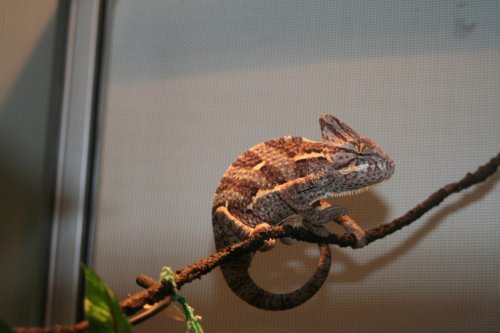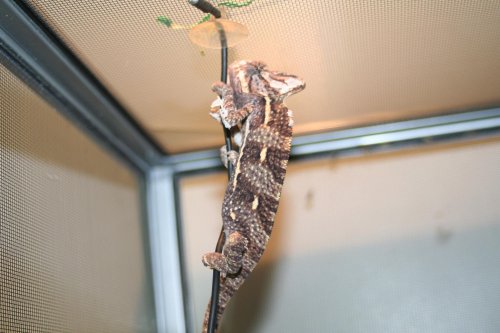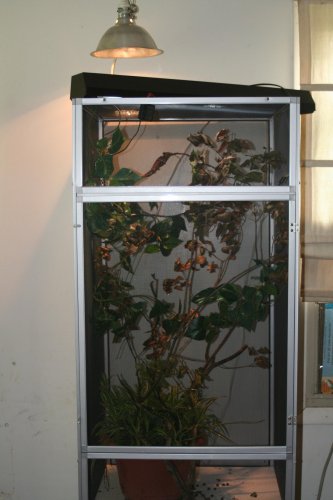cwilfinger
New Member
I have a 3-4 month old male veiled Cham. that I purchased from a reptile swamp about 2 weeks ago. He was brown in color when I got him, and has basically stayed that color ever since. Occasionally he will turn green (very, very rarely and only when he is next to a green leaf)) and one time when my son stuck his hand in the cage he turned a beautiful color of blue and yellow stripped. Is this his true color (brown)? Or should he be green like most pics of veiled that I have seen?
Cage is an all screened 4' x 2' x 2'
Basking lamp on outside of cage - zoo med spot lamp 50w
basking site temp 91.2f
Temp at bottom of cage is 84f
uvb bulb is a reptisun 5.0
Feeding crickets everyday alternating between Herptivite and Jurassi-Cal Calcuim supplement (no D3)
misting cage 4-6 times a day.
Cage is an all screened 4' x 2' x 2'
Basking lamp on outside of cage - zoo med spot lamp 50w
basking site temp 91.2f
Temp at bottom of cage is 84f
uvb bulb is a reptisun 5.0
Feeding crickets everyday alternating between Herptivite and Jurassi-Cal Calcuim supplement (no D3)
misting cage 4-6 times a day.






